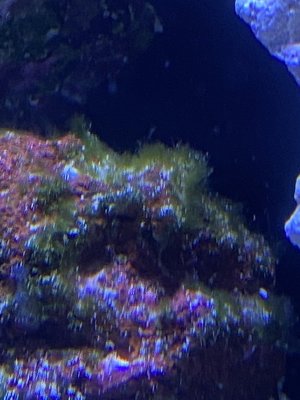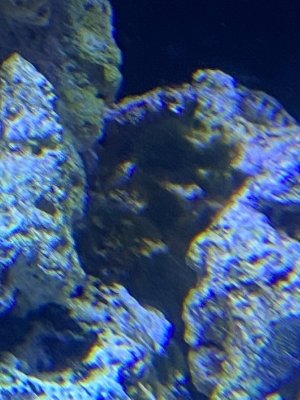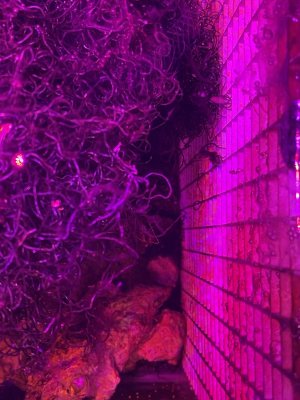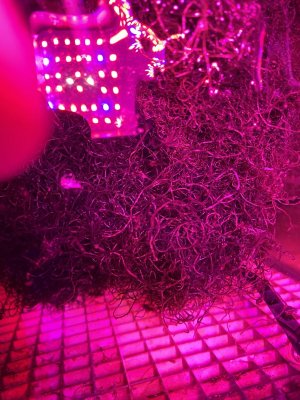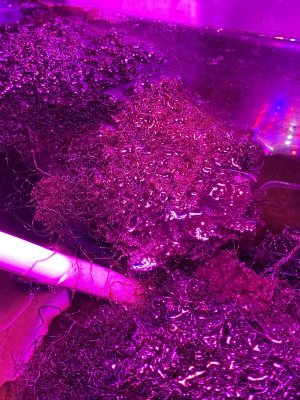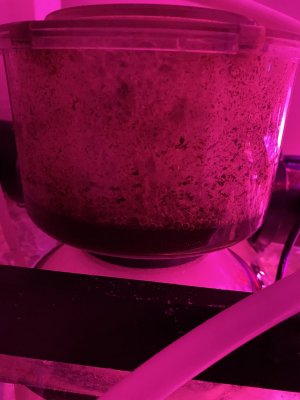- Joined
- Oct 4, 2018
- Messages
- 90
- Reaction score
- 29
Recently I have notice that parts of my Chaeto is showing signs of turning white. It is not in patches or one centralized locations; but more like separate roots (looks like an old man's white hair). The main piece is still dark green; with these white hair like roots. My phosphates have been around .5 (using API testing) with nitrates 0.0. Everything in tank has been looking good; have zoas, torch, and hammer corals; so a little dirty water is good. I am seeing very small patches of new GHA growth here and there; but nothing that my Lawnmower blenny will not be happy to take care of. I have a ACKE LED Grow Lights Full Spectrum,Plant Lights,Growing Lamps 12W for Indoor Plants,Hydropoincs (Red Grow light). That sits about 8" above the refugium; which I run about 12 hours. I have 2 different sets of Chaeto; one that sinks (big ball about the size of 2 softballs) and 3 smaller - fist size that seem to float. The 3 floating pieces; seems to grow a green moss on the top where it sticks out of the water. (I try to flip these offen to reduce the gree moss growth).
Questions are: what is driving the white hair like roots? (these are not worms - they don't move). Why does one chaeto float and the other one doesn't? Is the green moss need to be removed?
Additional information - I had good Copepods population; until my Strip Blenny took a ride down to the sump - and into the refugium. Returned him to main tank last night. When I added the Copepods to the refugium; I cut the flow from the refugium for fear of washing them into my main. Will slow flow through the refugium have an affect on the Chaeto? It has been in refugium for about 3 months now; and I have not trimmed it as of yet (not a lot of growth) because I have a lot of room for new growth; before I need to start harvesting.
Should I reduce lighting length? Increase flow? Harvest? Add a Chaeto grow?
Thanks for any help.
Questions are: what is driving the white hair like roots? (these are not worms - they don't move). Why does one chaeto float and the other one doesn't? Is the green moss need to be removed?
Additional information - I had good Copepods population; until my Strip Blenny took a ride down to the sump - and into the refugium. Returned him to main tank last night. When I added the Copepods to the refugium; I cut the flow from the refugium for fear of washing them into my main. Will slow flow through the refugium have an affect on the Chaeto? It has been in refugium for about 3 months now; and I have not trimmed it as of yet (not a lot of growth) because I have a lot of room for new growth; before I need to start harvesting.
Should I reduce lighting length? Increase flow? Harvest? Add a Chaeto grow?
Thanks for any help.
Last edited:







